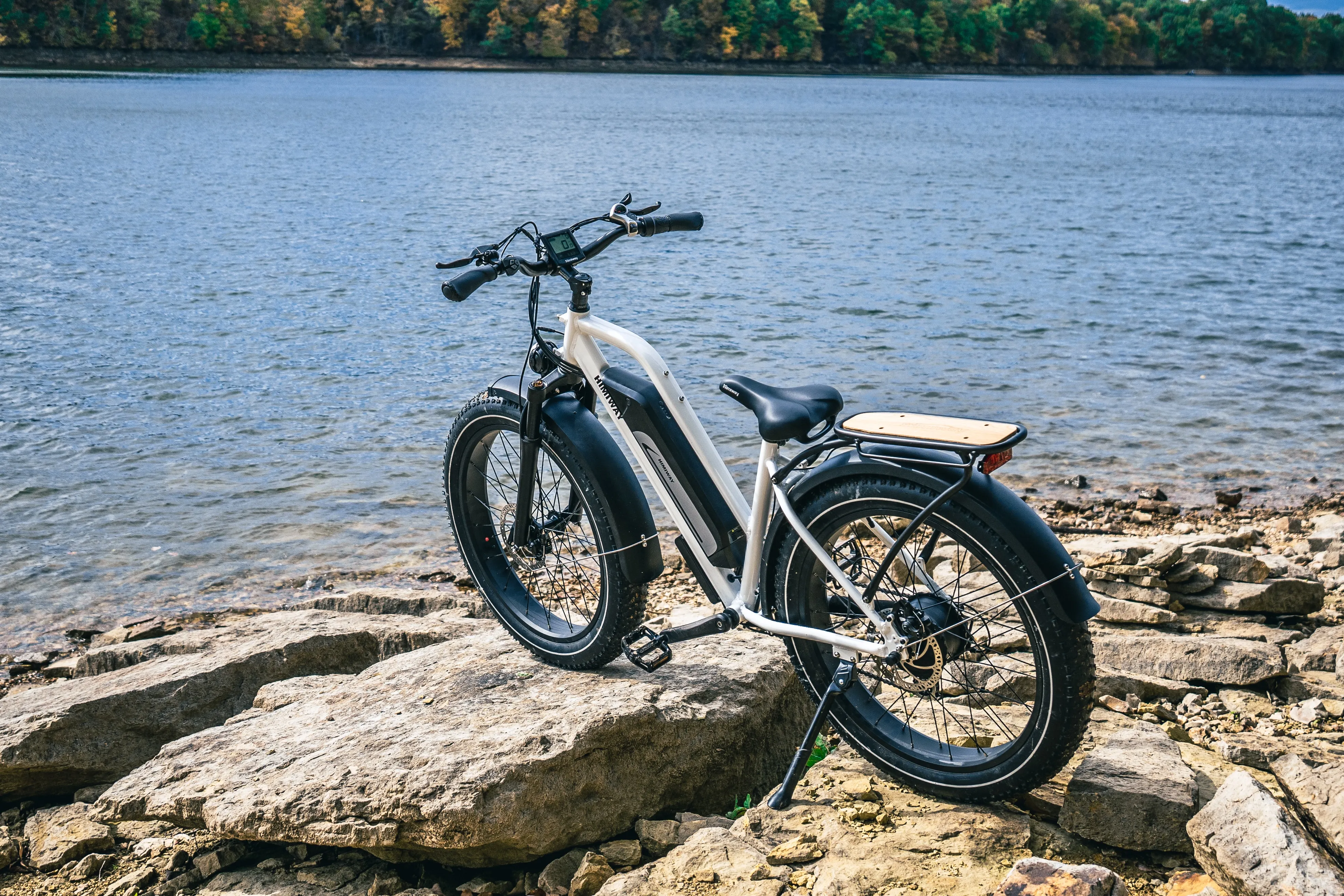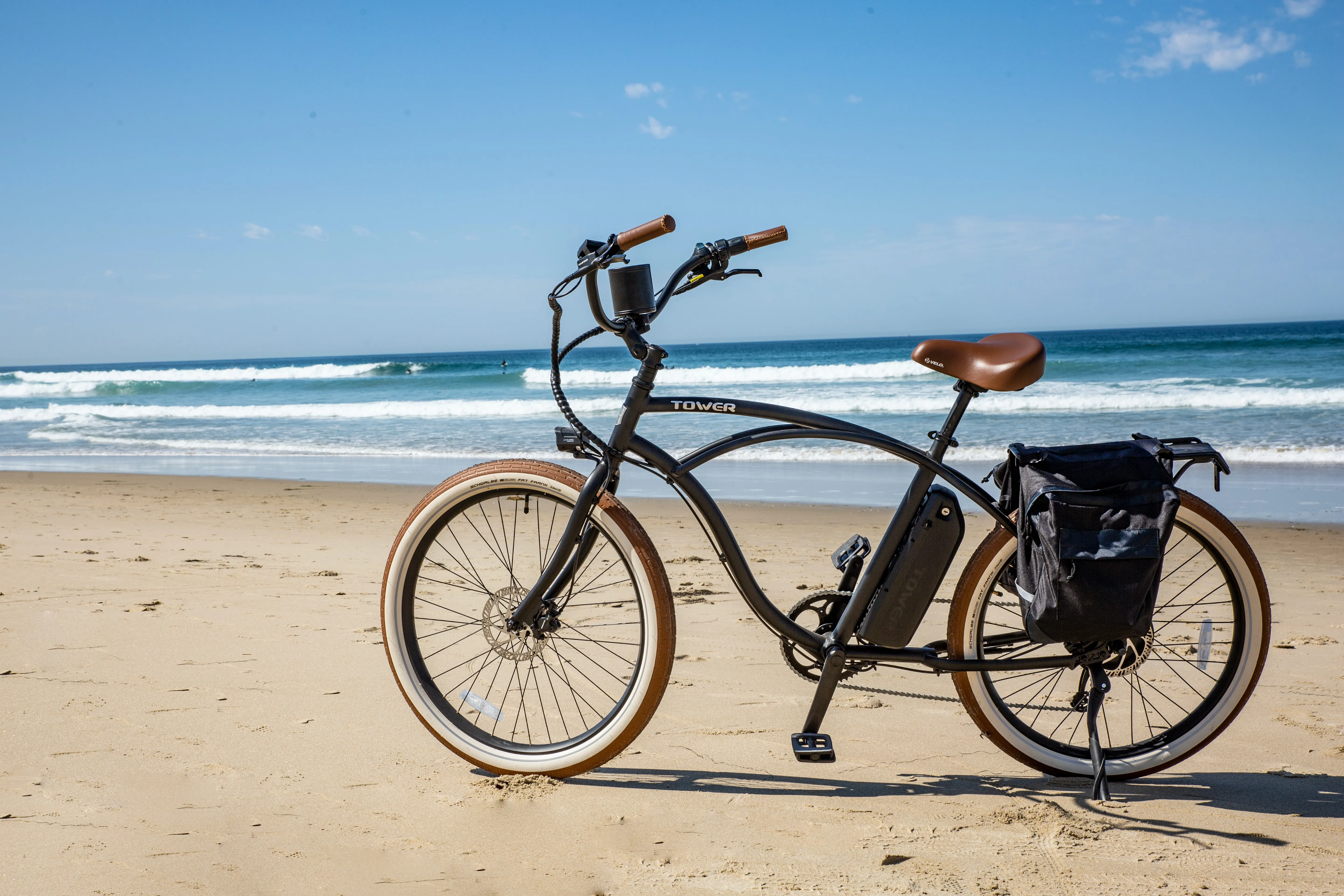Ultimate Guide to Top Rated eBikes: Exploring Pedal-Assisted Bikes, Motors, Laws, and Battery Quality
In recent years, a revolution has quietly taken over our streets and trails: the electric bike, or eBike, has emerged as a game-changer in the world of cycling. Seamlessly blending the joys of traditional biking with the power of modern technology, eBikes have swiftly become a sought-after choice for commuters, outdoor enthusiasts, and leisure riders alike.
Are you on the lookout for the perfect eBike, one that effortlessly blends innovation, functionality, and style?
Look no further. Welcome to our comprehensive guide exploring the realm of top-rated eBikes and the fascinating world of pedal-assisted wonders.
From understanding the nuances between hub motor and mid-drive eBikes to navigating the legal landscape and the power capabilities of 750-watt eBikes, our journey takes us through every aspect of this electrifying domain. We'll also delve into the realm of fat tire eBikes, DIY kits, and the often overlooked but crucial aspect of battery quality featuring high-grade lithium cells.

Whether you're a seasoned rider seeking an upgrade or a newcomer curious about the buzz surrounding eBikes, this guide is your ticket to unraveling the mysteries and intricacies of these pedal-assisted machines. Join us as we embark on a journey to uncover the essentials, debunk myths, and empower you to make an informed choice that perfectly aligns with your riding aspirations and lifestyle.
So, fasten your helmets, charge up your curiosity, and let's dive headfirst into the electrifying universe of top-rated eBikes and pedal-assisted bikes!
II. Understanding eBike Varieties
Electric bikes, or eBikes, come in various forms, each catering to different preferences and riding styles. Let's take a closer look at the diverse range of eBike varieties:
A. Pedal-Assisted Bikes (Pedelecs)
Pedal-assisted bikes, commonly known as Pedelecs, are designed with integrated motors that provide assistance as you pedal. These motors engage when pedaling, offering varying levels of support, amplifying your pedaling power without entirely replacing your effort. Pedelecs are favored for their ability to provide a natural riding experience, seamlessly adjusting power in response to the rider's pedaling input.
B. Hub Motor vs. Mid-Drive eBikes
Understanding the fundamental differences between hub motor and mid-drive eBikes is crucial in selecting the right bike for your needs.
- Hub Motor eBikes: These house motors within the wheel hub (either the front or rear wheel), providing direct propulsion. They're often simpler in design and easier to maintain but might lack the torque for steep terrains.
- Mid-Drive eBikes: In contrast, mid-drive eBikes feature motors installed near the bike's bottom bracket, directly engaging with the bike's drivetrain. This setup offers better balance, improved handling, and more efficient power utilization, especially on hills or challenging terrains.
C. Exploring the Features of Fat Tire eBikes
Fat tire eBikes are gaining popularity due to their distinctive wide tires, designed for enhanced stability and traction on various surfaces. These robust bikes are well-suited for off-road adventures, sandy beaches, snow-covered trails, and rough terrains, providing a smooth and comfortable ride with their superior shock absorption capabilities.

Understanding these eBike varieties allows riders to pinpoint the style that best aligns with their intended use, terrain preferences, and desired riding experience. Whether it's the seamless integration of pedal-assisted technology or the terrain-conquering abilities of fat tire eBikes, each type caters to a specific set of needs and preferences, offering riders a wide array of choices in the eBike market.
III. Power and Legal Aspects
The power and legal considerations surrounding eBikes play a significant role in their selection and usage. Let's delve deeper into these critical aspects:
A. 750-Watt eBikes: Advantages and Limitations
- Advantages: 750-watt eBikes possess increased power, enabling swifter acceleration and better performance, especially in challenging terrains or when carrying heavier loads. These bikes often offer higher speed capabilities and enhanced torque, making them suitable for demanding rides.
- Limitations: However, certain regions or jurisdictions have specific regulations regarding the maximum power output allowed for eBikes on public roads or trails. It's crucial to understand and adhere to these limitations to ensure compliance with local laws.
B. Overview of eBike Laws and Regulations
- Understanding the legal framework governing eBikes is essential before hitting the road. Regulations regarding speed limits, power output, and where eBikes can be ridden can vary significantly across different regions or countries.
- Familiarizing oneself with local laws ensures safe and legal riding practices, avoiding potential fines or legal issues while enjoying the benefits of eBike technology.
C. Importance of Adhering to Legal Guidelines
- Upholding legal guidelines isn't just about compliance; it's also about safety. Respecting speed limits, understanding where eBikes are permitted, and following traffic regulations contribute to a safer riding environment for both riders and pedestrians.
- Additionally, adhering to regulations helps in maintaining a positive image of eBike riders within communities, promoting responsible and considerate riding behaviors.
Understanding the power capacities of eBikes, along with the legal framework governing their use, empowers riders to make informed decisions while ensuring a safe and lawful riding experience. It's imperative to be well-versed in the laws and limitations to fully enjoy the benefits of eBikes while respecting the rules set forth in various regions.
IV. DIY eBike Kits and Customization
Diving into the world of DIY eBike kits and customization opens up a realm of possibilities for enthusiasts keen on personalizing their rides. Here's a closer look at this exciting avenue:

A. Introduction to DIY eBike Kits and Components
- DIY eBike kits provide individuals with the opportunity to convert their existing bikes into electric ones. These kits usually include essential components such as motors, batteries, controllers, and sensors, allowing customization based on personal preferences.
- Understanding the components and their compatibility with different bike models is crucial for a successful DIY eBike project.
B. Advantages and Challenges of Building Your Own eBike
- Advantages: DIY eBike projects offer flexibility and customization options, allowing riders to tailor their eBikes according to specific preferences, such as desired power output, battery range, or riding style.
- Challenges: However, challenges might arise in terms of technical expertise required, compatibility issues between components, and the time investment needed for assembly and troubleshooting.
C. Tips for Choosing the Right DIY Kit
- Researching and selecting the right DIY kit involves considering factors like motor power, battery capacity, ease of installation, and customer reviews. Opting for reputable brands or kits with good customer support can significantly impact the success of your DIY project.
- Assessing one's technical skill level and willingness to learn and troubleshoot potential issues is pivotal in choosing the appropriate DIY eBike kit.
Engaging in DIY eBike projects offers a hands-on experience, enabling riders to customize their eBikes to match their unique preferences and riding needs. While it presents exciting opportunities, it's crucial to approach these projects with adequate research, technical know-how, and a clear understanding of the components involved for a successful and enjoyable DIY eBike journey.
V. Battery Technology and Quality
Among the critical components of an eBike, the battery stands out as a cornerstone element that significantly influences performance and longevity. Let's explore the importance of battery quality and technology:
A. Significance of High-Quality Lithium Cells
- Lithium-ion batteries are the go-to choice for eBikes due to their high energy density, lighter weight, and superior performance compared to other battery types. Within the realm of lithium-ion batteries, the quality of the individual cells plays a pivotal role in overall battery performance.
- High-quality lithium cells offer better durability, longer lifespan, and consistent performance, contributing to a more reliable and efficient eBike experience.
B. Impact of Battery Quality on eBike Performance
- A battery's quality directly affects an eBike's range, power delivery, and overall performance. Superior battery technology ensures consistent power output, quicker recharge times, and better resilience against degradation over time.
- Investing in eBikes equipped with high-quality batteries might initially incur higher costs but pays dividends in terms of reliability and longevity in the long run.
C. Tips for Selecting eBikes with Superior Battery Technology
- Look for eBike models equipped with reputable battery brands known for their quality and reliability.
- Check for details on battery composition, capacity, and expected lifespan provided by the manufacturer.
- Consider user reviews and expert opinions regarding the battery performance of specific eBike models before making a purchase decision.
Understanding the significance of high-quality lithium cells within eBike batteries empowers consumers to prioritize battery quality when considering different eBike models. Making an informed choice regarding battery technology ensures a more satisfying and enduring riding experience, maximizing the potential of these electric wonders.
VI. Conclusion
Embarking on the journey to explore the diverse landscape of top-rated eBikes and pedal-assisted wonders has shed light on the intricate facets crucial for making informed decisions. Let's recap the key points covered in our comprehensive guide:
A. Key Takeaways:
- Varieties: Understanding the distinctions between pedal-assisted bikes, hub motor vs. mid-drive eBikes, and the features of fat tire eBikes allows riders to align their choice with specific needs.
- Power and Legal Aspects: Awareness of the advantages and limitations of 750-watt eBikes, along with adherence to eBike laws and regulations, ensures safe and lawful riding practices.
- DIY Kits and Customization: Delving into DIY eBike projects presents exciting opportunities for customization but requires careful consideration of components and technical expertise.
- Battery Technology: Recognizing the significance of high-quality lithium cells in eBike batteries impacts overall performance, range, and durability.
B. Empowering Informed Decisions:
- Armed with knowledge about eBike varieties, legal considerations, customization options, and battery technology, riders can confidently navigate the eBike market.
- Making informed choices aligned with personal preferences and riding requirements ensures a more rewarding and tailored eBike experience.
C. Encouragement for Further Exploration:
- The realm of eBikes continues to evolve with advancements in technology and innovation. Encouraging readers to stay updated and explore newer developments in this dynamic field is key.
- Exploring reputable brands, seeking expert advice, and engaging with the eBike community can further enhance one's understanding and enjoyment of these electric marvels.
In essence, this guide serves as a compass, directing riders towards a fulfilling and tailored eBike experience. Armed with knowledge and insights, riders can confidently traverse the world of top-rated eBikes, ensuring an electrifying and enjoyable ride ahead.


